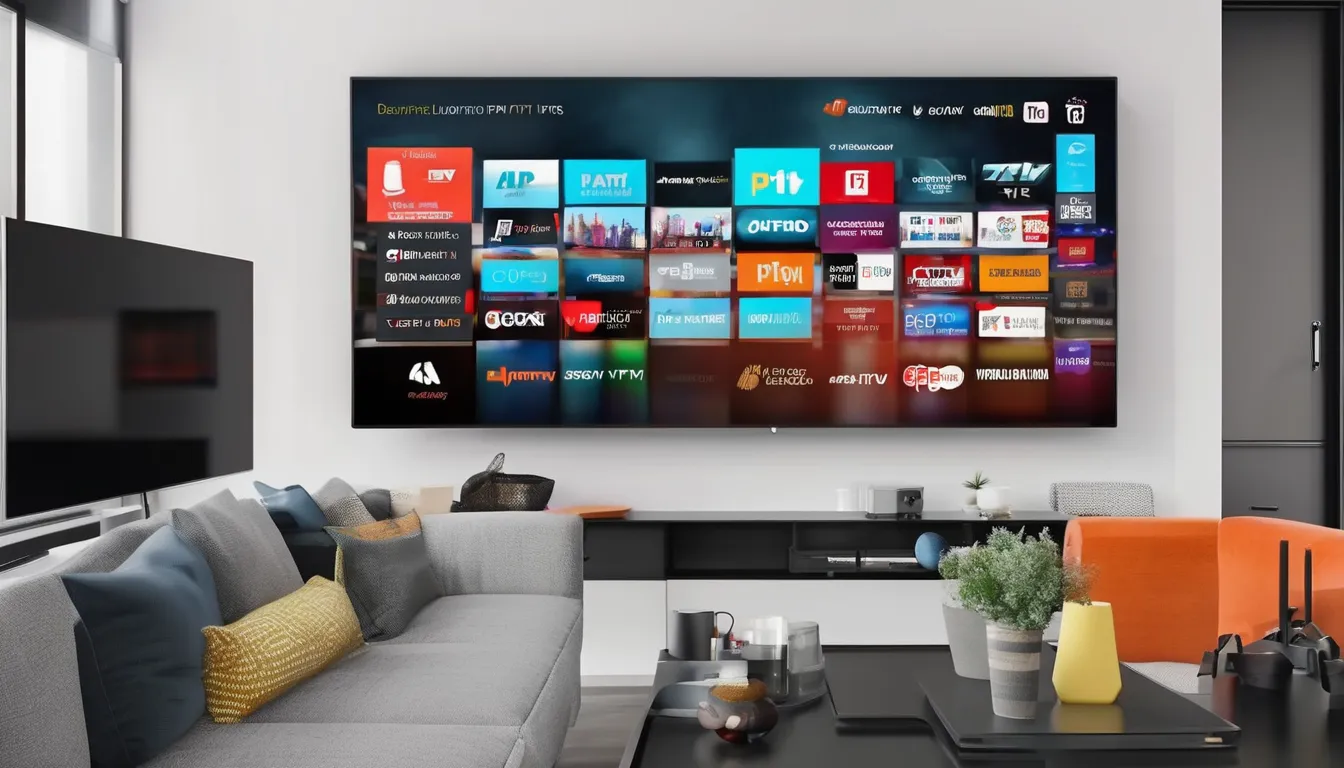When you’re ready to conduct a quick and efficient IPTV test, the first step is to ensure your internet connection is stable—at least 10 Mbps is ideal. You’ll want to use a compatible device, like a smart TV, and launch your IPTV application. From there, it’s crucial to select a variety of channels to monitor load times and video quality. However, there’s more to this process than meets the eye, especially when it comes to troubleshooting issues that might arise. What you’ll discover next could significantly enhance your viewing experience.
Understanding IPTV Basics
When exploring IPTV, it’s essential to grasp the fundamentals of this technology. IPTV stands for Internet Protocol Television, and it delivers television content over the internet rather than through traditional satellite or cable formats.
You’re essentially streaming video instead of receiving it via a physical signal. This means you can watch shows and movies on various devices, like smart TVs, computers, and tablets.
Understanding how IPTV works involves recognizing that it uses a broader internet connection to transmit data. You receive packets of video content as you request them, allowing for on-demand viewing and real-time streaming.
This technology often includes features like time-shifting, which lets you pause or rewind live TV, enhancing your viewing experience.
Your internet connection plays a critical role in the quality of your IPTV service. A stable and high-speed connection is necessary to avoid buffering and ensure smooth streaming.
Additionally, IPTV services can come in various packages, offering different channels and content types, so it’s crucial to choose one that meets your viewing preferences.
Familiarizing yourself with these basics will set a solid foundation for your IPTV journey.
Preparing for the Test
Before diving into your IPTV test, it’s crucial to gather all necessary tools and set up your environment properly. First, ensure you have a reliable internet connection. A stable connection is vital for testing IPTV performance effectively. Ideally, aim for a minimum speed of 10 Mbps for a smooth experience.
Next, you’ll need the right device. Whether you’re using a smart TV, a streaming device, or a computer, make sure it’s compatible with IPTV services. Install any required applications or software beforehand, as this will save you time during the test.
Don’t forget to create a checklist of the channels or services you want to test. This keeps you focused and organized throughout the process. Additionally, consider using a VPN for privacy and to bypass any regional restrictions.
Lastly, find a quiet space to conduct your test. Background noise can be distracting and may affect your concentration.
With everything prepared, you’ll be in a great position to evaluate the IPTV service effectively. Taking these steps ensures you maximize your testing experience and gather accurate results.
Conducting the Test
With everything set up, you can begin the IPTV test. First, launch your IPTV application on the device you plan to use. Ensure you’re connected to a stable internet connection, preferably via Ethernet for optimal performance.
Once the app is open, navigate to the channel list or your desired content. Start by selecting a few channels from different categories, such as sports, movies, and news. Pay attention to how quickly each channel loads. A well-functioning IPTV service should have minimal buffering and quick response times. If you encounter any lag or long loading times, take note of those channels.
Next, check the video quality. Switch between SD and HD options if available. The picture should be clear and not pixelated, even when the content is fast-paced.
Don’t forget to test the electronic program guide (EPG), if your IPTV provider offers one. It should display accurate and updated information about ongoing and upcoming shows.
Analyzing Results
Analyzing results from your IPTV test is crucial for determining the service’s overall performance. After completing your test, take a close look at key metrics such as buffering times, video quality, and channel availability. These factors can reveal a lot about how well your IPTV service is functioning.
Start by checking the buffering times. If you notice frequent interruptions, it might indicate issues with bandwidth or server capacity.
Next, assess the video quality. High-definition streams should display crisp images without pixelation. If you encounter low resolution or significant drops in quality, consider this a red flag.
Also, pay attention to channel availability. If certain channels are consistently unreachable, it could point to a problem with the service provider.
Keep a record of any specific issues you encounter, like error messages or lagging streams, as this information can be invaluable for future troubleshooting.
Troubleshooting Common Issues
Many users encounter common issues while using IPTV services, but troubleshooting them doesn’t have to be daunting. You can quickly resolve most problems with a few simple steps. First, check your internet connection; a weak or unstable connection can lead to buffering or pixelation. Restarting your router may also help.
If you’re experiencing issues with specific channels, try refreshing the IPTV app or checking for updates. Sometimes, the server might be down, so you can contact your IPTV provider for status updates.
Here’s a quick reference table to help you identify and troubleshoot common problems:
| Issue | Possible Cause | Solution |
|---|---|---|
| Buffering | Slow internet speed | Upgrade your internet plan |
| No channels available | Service provider issue | Contact your provider |
| App crashing | Outdated software | Update the app |
| Poor picture quality | Low bandwidth | Reduce streaming quality |
Conclusion
In conclusion, performing a quick IPTV test is straightforward and essential for ensuring a great viewing experience. By understanding the basics and preparing adequately, you can easily conduct your test and analyze the results. If you encounter any issues, don’t worry—troubleshooting common problems can help you get back to enjoying your favorite channels. Stay proactive and regularly test your assinar iptv service to keep everything running smoothly for uninterrupted entertainment.

